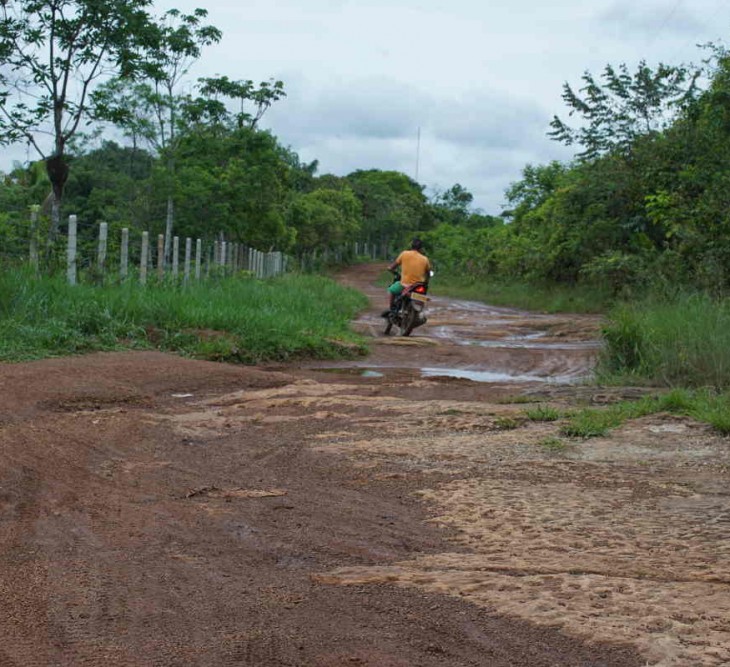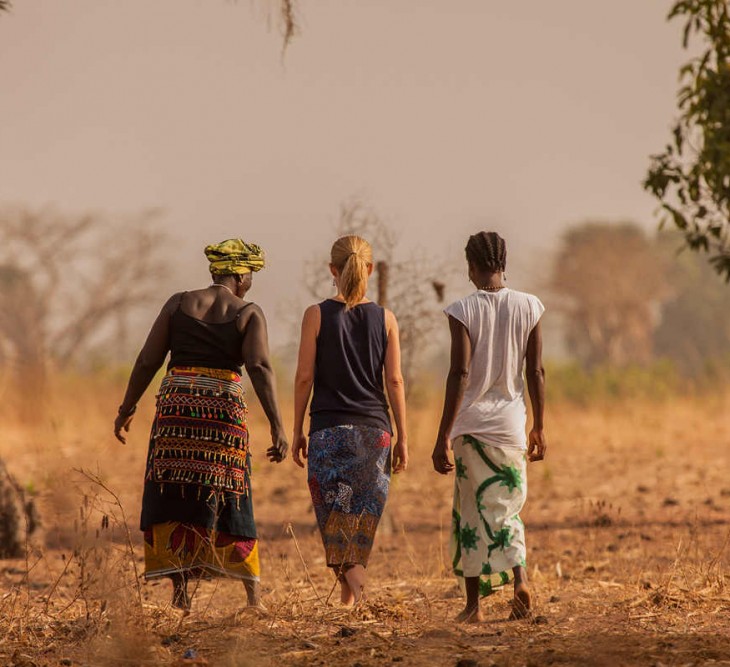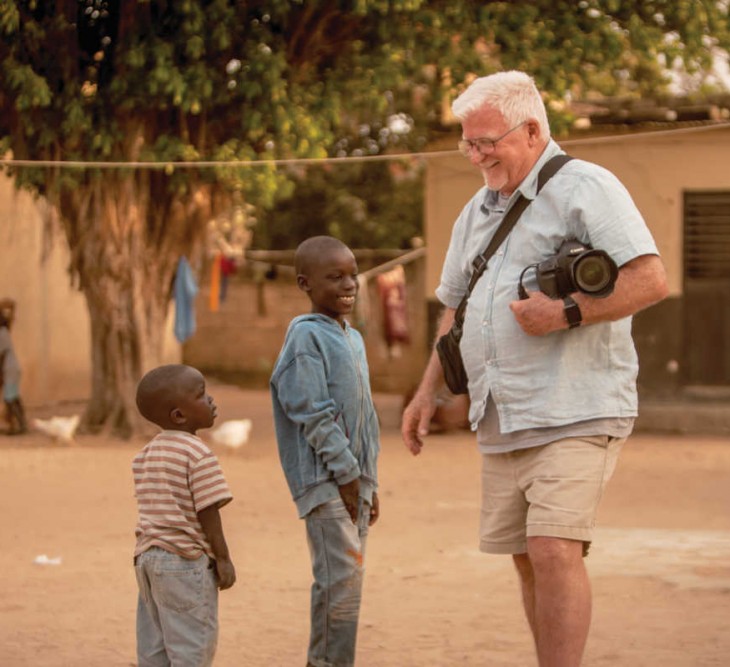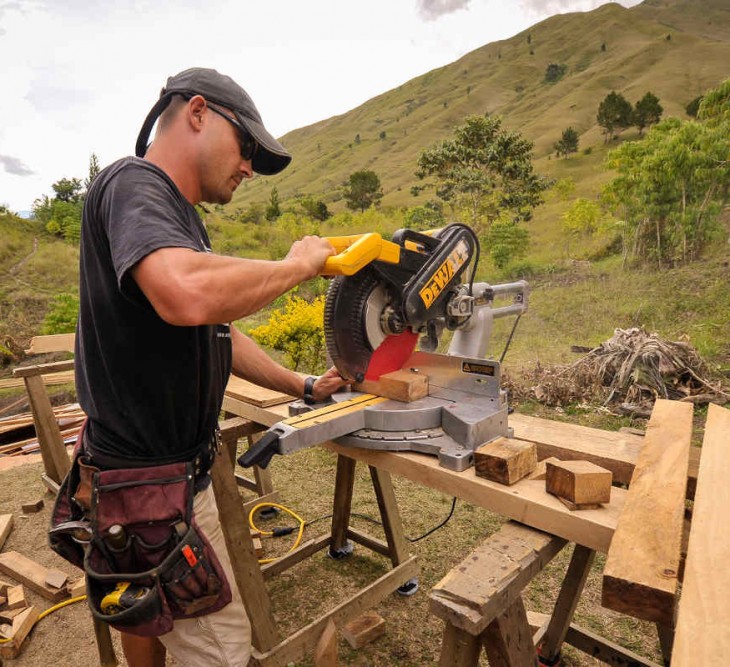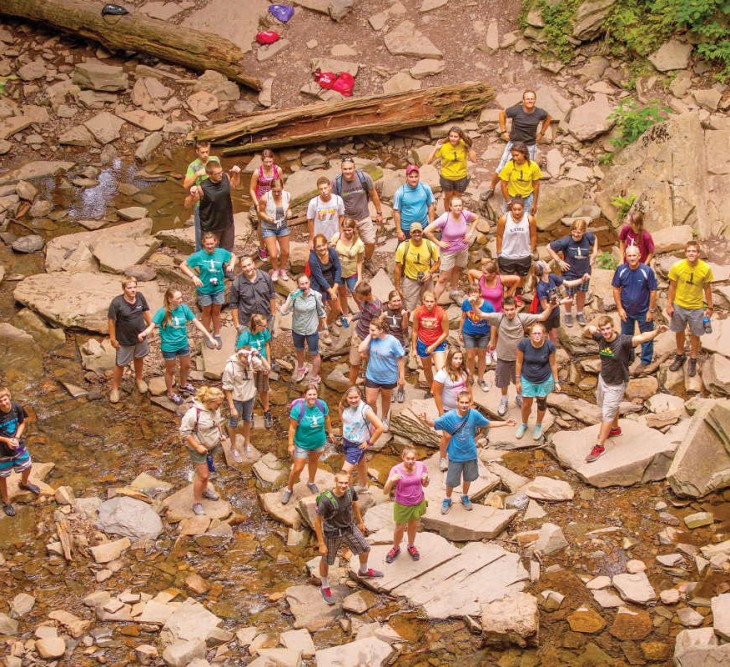A E I O U and Always Why
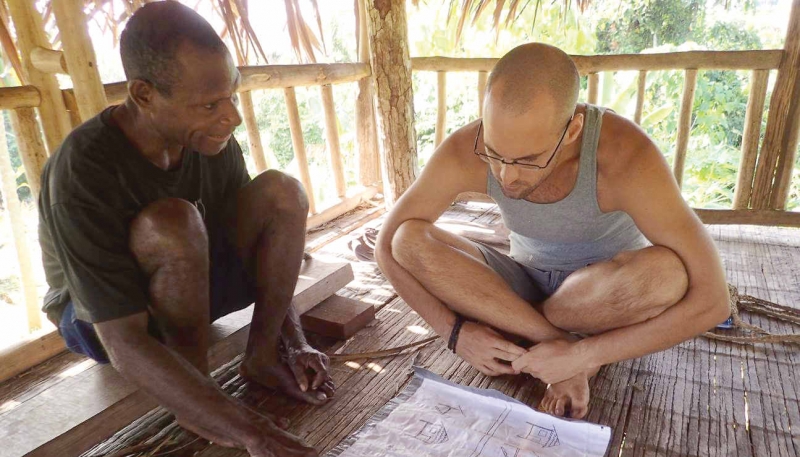
Seth and Rochelle Callahan delve into the culture and language of the Iski people so they can clearly communicate God’s truth
The drums never stopped. The singing was loud and energetic. Normally reserved and outwardly somewhat westernized, the Iski people’s traditional culture was on full display as the singsing ceremony continued throughout the night and into the morning. For Seth and Rochelle Callahan, missionaries to the Iski people, there was so much to take in, so much to learn.
Everyday shorts and T-shirts had been replaced by bark coverlets and grass skirts. Adornments of huge feather headdresses, pig tusks, dyed grass, seashells and mud-based body paint communicated the story of each person’s lineage.
This wasn’t just for the older people who had grown up separated from the “modern world.” From the oldest to the youngest, all of the people had gathered to participate or watch. Even toddlers joined in the careful choreography, holding onto parents as they marched and sang. Women of all ages stood along the perimeter echoing the chant while swaying a slow, rhythmic shuffle and waving palm fronds.
As the people continued their traditional dances throughout the night and early into the morning, the Callahans gained further glimpses into the radically different thinking of the Iski people.
IMMERSED IN CULTURE AND LANGUAGE
Six months ago Seth and Rochelle became the third family on the missionary team. Living in an Iski village in Papua New Guinea, the Callahans eat, breathe and sleep Culture and Language Acquisition (CLA) in preparation for bringing the Iskis the life-changing message of the Scriptures.

“Our team has been living with them for two years, working hard to get to a point where we can communicate the message of redemption in their heart language.”
Cultural events like this can be overwhelming for those in the beginning stages of their CLA experience. Seth recounted, “This was our first ever singsing, so we didn’t really know what to expect going into it, but we were hoping to get a few cultural insights throughout the night. It certainly didn’t disappoint! This thing was packed full of cultural rituals and beliefs! Honestly, at times, it was kind of like trying to catch water in a Dixie cup while getting sprayed with a fire hydrant. There was just too much going on for us to keep track of it all!”
Since culture and language study builds on itself, the Callahans will later revisit their notes and photos of the singsing throughout their CLA journey, digesting what they can understand now and coming back later to the more difficult facets as their understanding of the culture deepens.
Partway through the festivities that evening, the Iskis warned those who were visiting from other villages to remember not to walk around at night by themselves, because evil spirits might attack them. “Like with everything else we experience among the Iskis, we now have more questions than when we started.”
A HANDS-ON APPROACH
Experiences such as the singsing are foundational to helping missionaries increase their understanding of culture and language. While Seth can’t schedule major events like this, he can plan for exposure to the Iskis’ everyday living. Seth plans for one or two days per week in everyday cultural events.
“I typically spend two to six hours out with the people, observing and taking part in a normal life event. This ranges from hiking to the lake to go fishing to going through the procedures of cooking different foods to working in a garden to learning how to cut down a tree. During these days I spend more time taking pictures, asking questions, and ‘experiencing’ culture and language. When I get back home, I record what I did and organize my photos and audio recordings. And I often try to put together a short picture book summarizing the event so I can ask questions about it later. Also, I try to spend some time reviewing older audio recordings that I’m still learning words from.”
Other days he spends with culture/language helpers: “I prearrange to meet with one or two village guys in the morning and go through language drills in a haus win (pavilion-type structure) near my house for two hours. Usually, I will spend some time going through a couple of photo books during this time, trying to elicit different nouns and verbs and things.
“This is also the time when I practice Total Physical Response language learning, where the focus is on seeing, touching, doing and mimicking the things that my culture/language helper is teaching me. This includes lots and lots of repetition of basic words and sentences that make me very thankful for my patient teachers!
“To break things up, I also try to do different ‘games’ during these sessions, like having my culture/language helper tell me an action that he’s going to do, and I have to watch and tell him whether or not he did what he said he would do. They get a kick out of trying to trick me! I end each session by getting a few more recordings of things that we’ve gone over. I spend the afternoons drilling in our office with recordings. Or I’ll go around with my photo books and try to practice talking about the different cultural events that I’ve experienced.”
CULTURE + LANGUAGE = REAL LIFE
It is critical to learn language in the context of culture. Seth explains, “The C part of CLA (culture) is hugely important. It is in no way secondary to language. In fact, the more I learn, the more I see that language and culture are intrinsically intertwined. If we were to learn the vocabulary and the grammatical features of the Iski language separate from the culture in which these language aspects live, then we would not have an accurate understanding of the language.
“If language is the ‘what,’ then culture is the ‘why.’ If we want to truly learn the language, then we need to learn it in the culture that it exists in.”
Take, for example, the word the Iski people use when talking about prayer. “It’s a word that has been in their language forever. At first glance, this would seem like an easy and helpful addition to a missionary’s vocabulary, right? Awesome! They already have a word to describe talking to God! I can use that when I teach! To find a word for ‘prayer’ already in the language is like gold.
“Culture, however, makes the word almost useless. It is the word that they use to talk about man talking to a spiritual being. But every time this interaction is depicted in a traditional story, the spirit is being manipulated by the man. This word doesn’t represent communication between God and man. It represents man’s power over spirits through words. But you’d never know that without studying the culture! And the people wouldn’t know to tell you the difference, because they’re only aware of their own culturally defined way of interacting with the spirit world.”
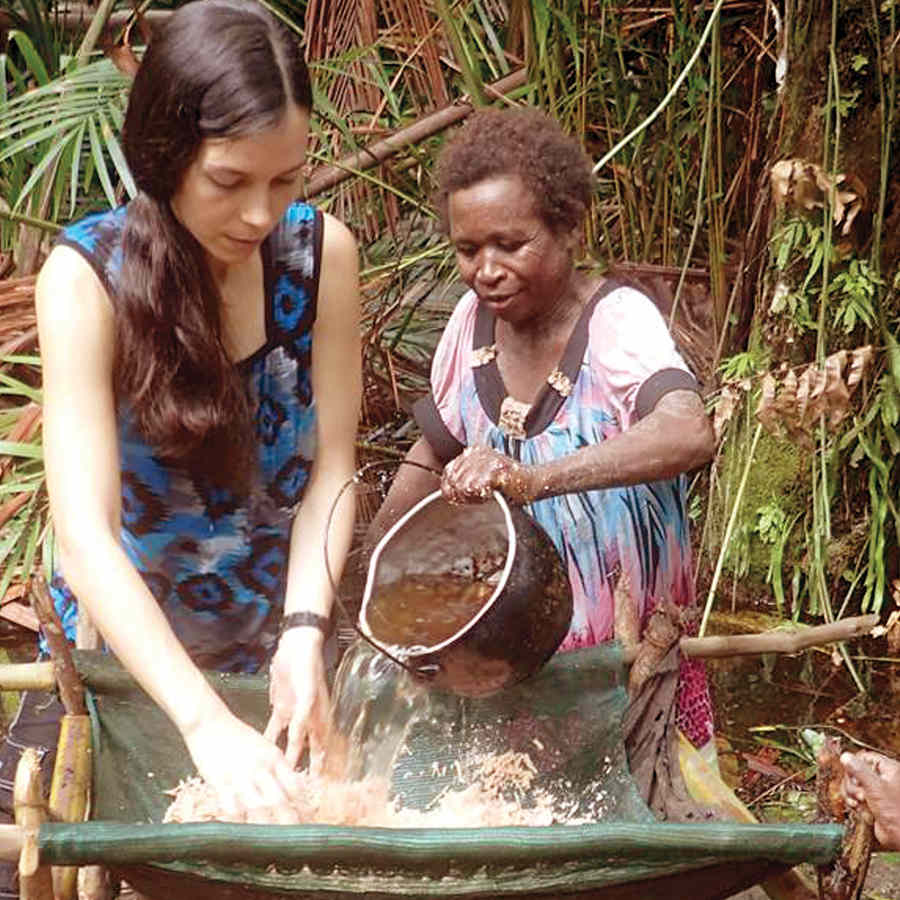
LEARNING SO THEY CAN TEACH EFFECTIVELY
Seth and Rochelle benefit from the hard work of their teammates. Jason and Nisae Williamson and André and Aurelie Tousch have lived with the Iskis for almost two years. They have already completed their formal time of CLA study.
“Because the Iski language was previously unwritten, learning to speak it has been very difficult. But after building a vocabulary and collecting a good deal of [language data], our partners were finally able to put together an orthography (alphabet).”
Nisae and Aurelie began teaching literacy classes as this article was being written. And Jason and André are diving into Bible translation and lesson development. They anticipate starting the Bible teaching early next year!
Motivation runs high for the Callahans to complete their time of CLA. Just before the singsing one of the older men in the village told Seth, “It’s good that you are coming to our singsing and learning how we do things. You need to know everything about us. Then, when you bring us God’s talk, you can give it to us in a way that we Iskis will understand.”

